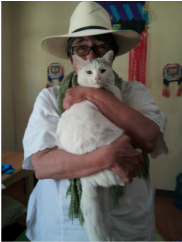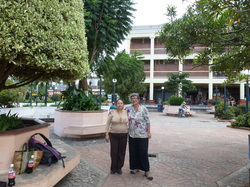
I was truly fortunate in finding Mily, my teacher through Escuela de Español Cooperativa in Antigua. She’s had over twenty years experience teaching Spanish and was immediately excited about the tours. She has a lively interest in teaching and in her own country and is an intelligent and progressive guide, in harmony with my own interests. One of her first suggestions was that we take a field trip to Jocotenango, where an Antiguan coffee farmer, Ricardo Pokorny, has created a museum of music, culture, and coffee.
Jocotenango is a scant 3 kilometers from Antigua so we took the local bus. Though it is close to Antigua, the setting is much less cosmopolitan and the mountains seem only a step away. We arrived before the museum was open and so we wandered among the adjacent horse stables which are part of a project in equine therapy for disabled kids. Each stall had a bright hand -decorated sign with the name of each horse. A few kids were there, mucking out the stalls.
When it comes to museums, there are basically two kinds. One kind resembles a textbook, full of dusty signs and displays of artifacts behind glass. La Azotea is the other kind, one which takes great care in providing contextual and accessible exhibits and excellent bilingual tour guides.
We began with the museum of musical instruments. Our first guide not only discussed the pre- Hispanic instruments of the Maya, but played each of them too! Flutes are called divine instruments in the Popoh Vuh , the Mayan creation story. Our guide played one of the ancient ceramic flutes so we could hear this ancient celestial sound. Today Mayan ceremonies still use the flute as well the ancient drums.
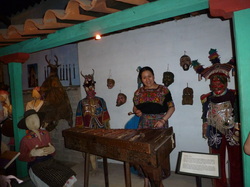
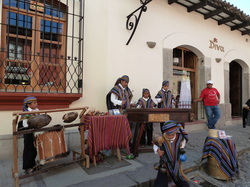
The museum also includes cultural dioramas which feature some of the traditions and lifestyles found among the twenty-two different Mayan groups who inhabit Guatemala. One exhibit featured Maximón, the cigar smoking, rum drinking figure associated with healing and good luck. I visited Maximón in Santa Cruz on Lake Atitlan when I first visited Guatemala. He is tended by Mayan spiritual leaders, confrades, and is visited by Mayans and Ladinos alike with prayers for healing and luck.
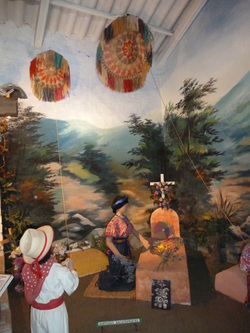
The museum itself is set on the grounds of a working coffee farm and naturally included a museum dedicated to coffee. Guatemalan coffee is ranked the third finest in the world and is a major export. Guatemalans are big coffee drinkers themselves, but most can only afford Nescafe, made, we learn on the tour, from the lowest quality of beans.
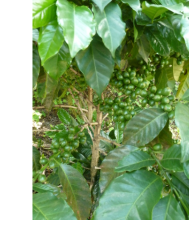
The coffee on the Azotea farm is shade grown, with bananas, avocadoes and other fruit and native trees hovering over the coffee plants. La Azotea uses a natural spray of cayenne pepper and water to control insects. One coffee plant provides beans for about 40 cups of coffee or twelve cups of expresso. In Guatemala, the beans are handpicked by Mayan women who receive only $5 for every hundred pounds they pick. The men rake and dry the coffee, often working twelve to fourteen hours a day. Given the high price consumers pay for a cup of fine Guatemala brew, the economic importance of Fair Trade coffee, where workers receive a larger percent of the coffee profits, is significant.
We tasted coffee beans and watched the process of roasting the coffee, which takes only several minutes. Then we walked through the coffee farm, where many of the shade trees were labeled. The tour ended on a perfect note with a demi-tasse of freshly roasted, perfectly brewed coffee which Mily and I savored on the patio. It was one of the best cups of coffee I have ever had.
Perhaps you’re wondering about the most exotic and expensive coffee in the world? A sign at the museum noted that Kopi Luak, with only 1000 pounds harvested annually, sells for upwards of $600 pound or $100 cup depending on where you buy it. Produced in Vietnam and the Phillipines, this coffee bean has some help achieving this distinction, as it has first been eaten by Asian Palm civets, partially digested in their stomachs and then collected from their fecal matter. (Civets resemble mongoose, so maybe Kona coffee growers can see if the local mongoose population has any affinity with their already tasty brew.)
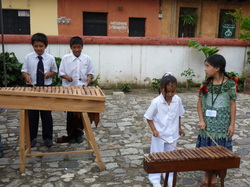
In the meantime, I’m more than happy drinking the world’s third finest coffee, fresh from the trees to the cup in Guatemala, with a little marimba music on the side.
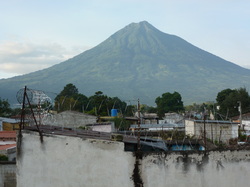
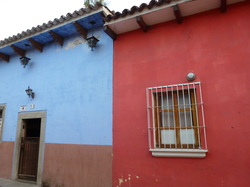
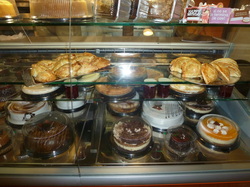
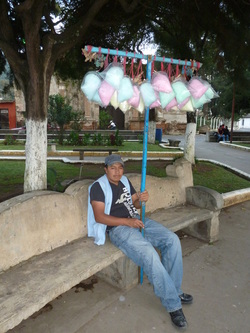
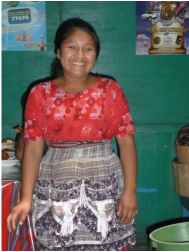
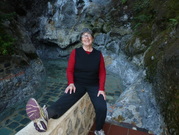
 RSS Feed
RSS Feed
